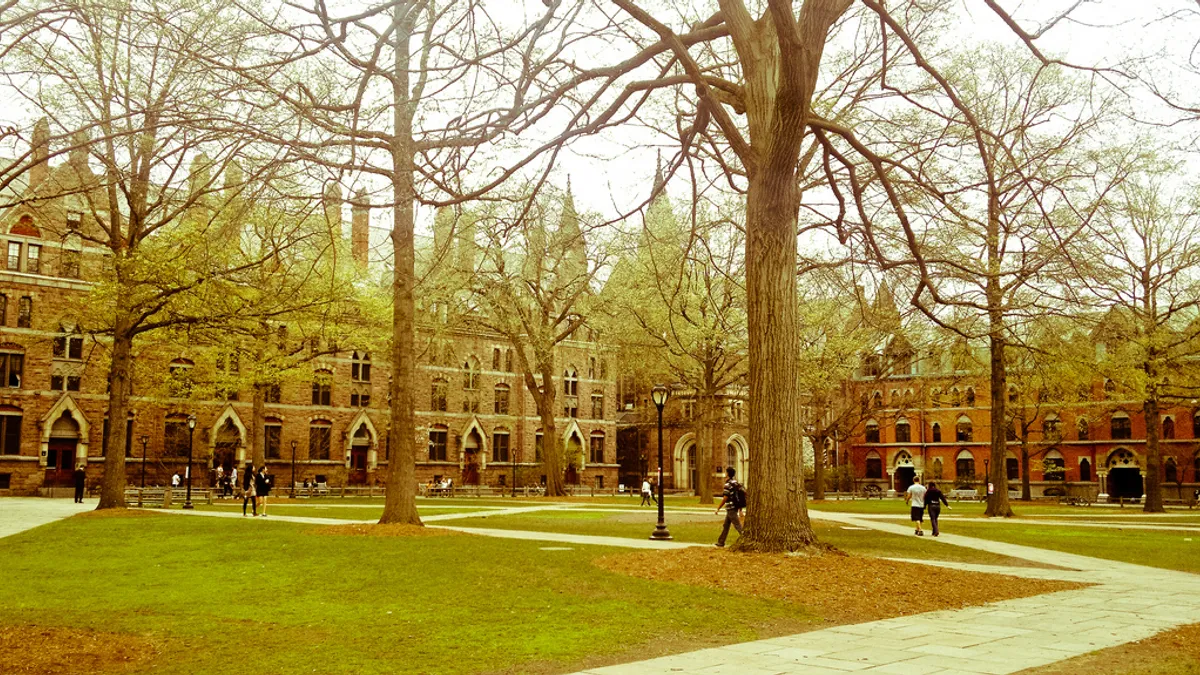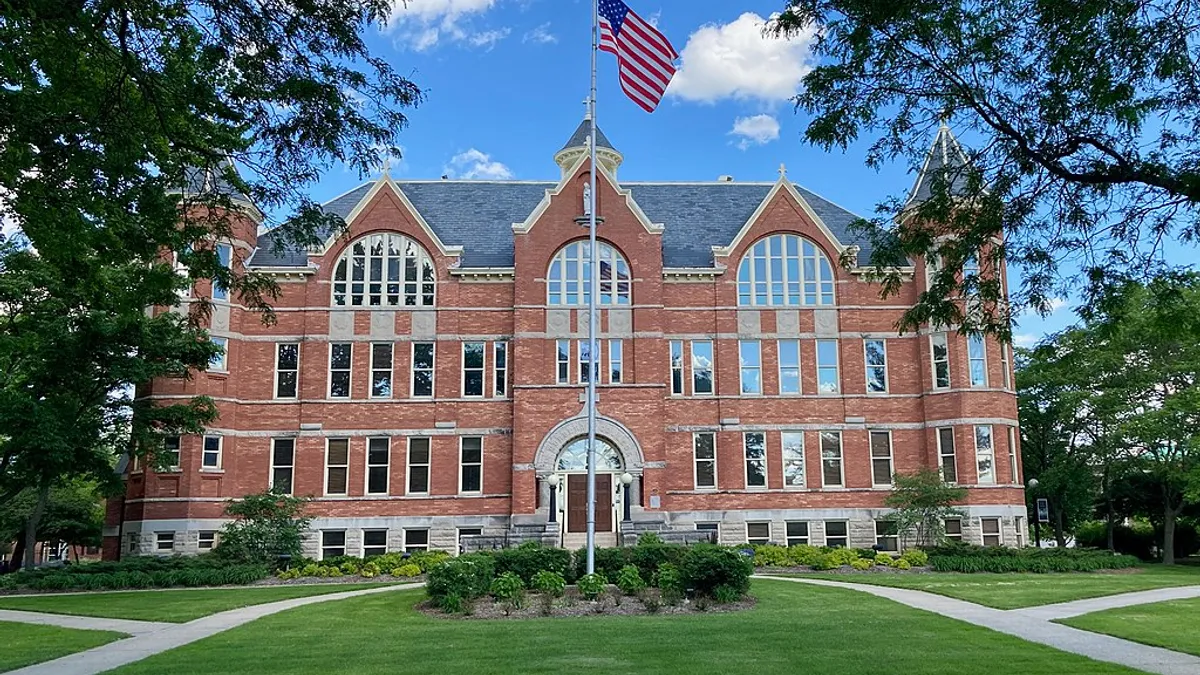Dive Brief:
- Long known as centers for advancement and testbeds for innovation, many higher education campuses are installing smart technologies and focusing on sustainability. From the changing role of the CIO to adoption of the Internet of Things and ever-changing technological trends, many of the industry's largest institutions are beginning to mirror the smart cities that are popping up across the country.
- The modern campus CIO has different roles and responsibilities than those even just a decade ago. No longer is it sufficient to just manage the IT department to keep the school's computers functioning properly; the CIO now generally interacts with nearly every department to ensure smooth, efficient digital operations and technological integration, and also typically leads strategic planning for further advancements that will benefit students and the institution as a whole.
- Smart technology like e-books and smart boards may be present inside of classrooms for learning purposes, but an influx of tech is being implemented outside of the classroom for smart campus operations.
Dive Insight:
The backbone of well-functioning smart campuses is an Internet of Things (IoT) system built on a solid, dependable Wi-Fi network. The network must be scalable to handle not only the campus infrastructure, but also the thousands or millions of electronic devices that students bring along. That has prompted dozens of higher learning institutions — including the University of Arkansas and Ohio University — to upgrade their Wi-Fi in the past two years and add more access points to improve connectivity on campus, both inside and outside of classrooms.
Campuses are increasingly leaning on data collection to drive smart projects. Arizona State University uses sensors and cameras throughout campus to gather data, but perhaps most prominently with its stadium operations. For example, some of the stadium sensors collect temperature and noise data or locations where restroom faucets were left running, while cameras can help to track how well concession and restroom lines are moving. The University of Minnesota has installed nearly 300 digital information boards and interactive kiosks since beginning the program about a decade ago. The scalable system frequently adds information from additional departments and also can integrate campus emergency alerts. And last year, the University of Nebraska-Lincoln launched a pilot for 28 smart kiosks that let students remotely print from any connected device or cloud account. The kiosks joined other smart technologies on that campus including connected lockers and self-service checkouts.
Autonomous vehicles
The University of Wisconsin-Madison announced last month that researchers will install sensors on traffic lights this quarter along one travel corridor to create an AV testing zone, and simulations will help researchers determine how connected vehicles interact with each other and campus infrastructure. The University of Michigan has also been getting a lot of attention for its 32-acre connected and autonomous vehicle testing site, dubbed Mcity. Coming out of that testbed is a self-driving shuttle system; the two electric shuttles can each transport 15 passengers at a time.
Energy and environment
The University of Washington in Seattle is piloting a smart grid project with more than 200 smart meters installed on campus buildings that track real-time energy use. Computer software analyzes the gathered data to determine students' energy consumption, which eventually could lead to initiatives for lowering consumption, costs and environmental impacts.
Clemson University has undertaken a number of energy-saving and renewable energy initiatives such as installing solar panels and adopting an energy storage system that uses predictive control software to automate battery use and system control. California State University – Dominguez Hills also began construction of a campus energy storage system.
A number of campuses are also investing in microgrids. For example, the University of Texas at Austin has its own grid to meet the whole campus' electricity, heating and cooling needs, and Eastern Mennonite University's new microgrid is scheduled to come online next month. Not only will it be able to completely power the school independently of the local grid during times of high demand, it's also expected to create cost savings for the university.










